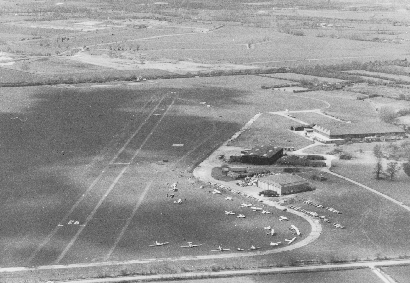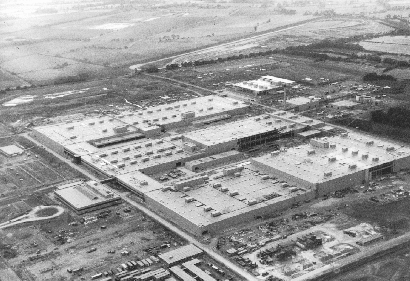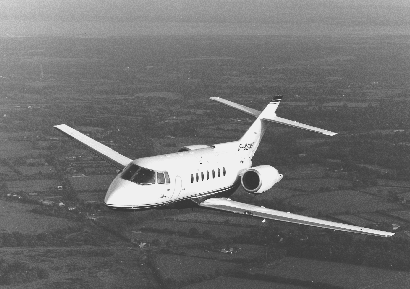Closures, airport bans and hostile neighbours have hit general aviation hard in Europe
Kate Sarsfield/London
EUROPEAN Owners of general aviation (GA) aircraft not only have to face the opprobrium of hostile neighbours, including the occasional sniper, but they are rapidly being deprived of airfields. Barely a week goes by when an aerodrome or airfield is not threatened with closure or, at best, severe disruption. Business aircraft, labelled by some as "admirals' barges" and regarded as ostentatious machines, are being pushed out of major international airports. Light aircraft are seen as noisy and intrusive. At least one UK resident has been known to fire a rifle at passing aircraft.
The airports are mindful of the small return from GA traffic. Lucrative airliners carry hundreds of passengers with money to spend on duty free goods, while people living near aerodromes complain of noise. Most recently, London City Airport - a strong supporter of business aviation in its early years - has seen airline traffic grow and has consequently banned corporate aircraft from peak-time operations.


Before and after: Burneston Aerodrome closed to make room for a Japanese car factory
LARGE SECTOR
Despite such moves, "GA is by far the largest sector of aviation, with more aircraft, more flyers and more operating sites than any other area", says David Ogilvy, chairman of the General Aviation Awareness Council (GAAC).
Ogilvy claims that the commercial air transport industry operates a total of 700 aircraft. In the UK, the majority of airline services are run out of 16 airports, and all scheduled services are contained in 23 airports. For GA, he says, "-there are more than 10 times as many conventional fixed wing aircraft" operating from 143 licensed aerodromes (there are between 300 and 500 private airstrips in the UK).
The London-based GAAC is concerned that the aviation community is generally unsupportive of GA. "The commercial air transport world depends on GA for its long-term future. It gets pilots from people who have paid for their own training," Ogilvy says. He claims that at the end of the recession, 43% of the entries to the airline world came from the private club s. He believes that the number could be higher in 1998. "The airlines take them [the pilots] at no cost to themselves. If they are dependent on GA, so are the airports, because the airports are no good without airlines."
In the UK, aerodromes are being sold off to make way for car factories and housing estates. "Aerodromes are being closed down by authorities simply for short-term gain," says Ogilvy. The sale of the Burnaston and Sunderland aerodromes in the north of England to a Japanese car factory in the late 1980s was the catalyst for the GA community. "Since then we have had to fight, not only to keep them open, but to stop them from booting us out of the larger airports like London Heathrow," he concedes.
The problems are mirrored in Europe, where environmental issues, particularly aircraft noise, coupled with public pressure, are putting a stranglehold on the GA community. "Pilots face the danger of seeing their airfields closed without justified reasons. Our defence of GA would be useless without the protection of the airports where we could land," says Italian Aircraft Owners and Pilots Association (AOPA) president Andrea Corte.
AOPA, the international organisation concerned with general aviation and aerial flying, has several offices in Europe coping with the increasing threat to the industry. Significantly, AOPA Germany claims that the greed and dishonesty of local politicians is the driving force behind many of their aerodrome closures.
Most recently, Neubiberg aerodrome in Munich was closed down to make way for a housing estate. "Houses are being built near airports because they [local authorities] know that the residents will complain about aircraft noise. In turn, the pressure will force the local aerodrome to be closed down and the land will become available," says Dieter Pade, managing director for AOPA Germany.
The Egelsbach, Frankfurt-based organisation claims that within 10 years, no GA aircraft will be able to land at major airports in Germany. "We will need suitable alternatives," Pade says.
SITES FOR SATELLITES
AOPA has identified 50 sites where satellite airports could be built and has approached the federal government with its recommendations. "Identifying them is the easy part. Bringing the idea to life could be more difficult," adds Pade.
Jan Cocheret, chairman of the Dutch equivalent to the GAAC, fears that GA in The Netherlands is being severely restricted. "The Dutch Government has implemented a noise zoning system, which was introduced as a result of environmental pressure," he says. Under the system, each aerodrome is allocated a certain number of points, which it must not exceed.
Cocheret explains: "For example, aircraft taking off during the week will have a low value and those taking off on a Sunday morning will have a high value - once these points are used up, that's it." He believes zoning is having a negative effect on GA, with many operators being forced to fly at certain times of the day, or, in an increasing number of incidents, being banned altogether from the aerodromes.
Cocheret cites a recent case at Rotterdam Airport on the north coast where all light aircraft, which accounted for 80% of the annual 100,000 movements, were banned from operating at the sites to cater for the "more economical" short haul carriers. "They are being pushed out and there is nowhere else for them to go."
The major European airports are the main culprits, including Amsterdam Schiphol, Paris Charles de Gaulle, Madrid Airport and London Gatwick and Heathrow. "They want to get rid of GA. They maintain that it is a nuisance because it interferes with the airspace requirements, and it is a hazard to their air traffic control," says GAAC's Ogilvy.
The environmental concerns over aircraft noise are becoming particularly acute around smaller aerodromes, where circuit flying is commonplace. Martin Robinson, operations executive at AOPA UK, maintains that it is a minority of residents that are causing most of the problems, claiming the majority are happy to keep the status quo.
To justify this point, Martin cites a survey conducted by the UK Department of Transport in 1988, in which residents surrounding six of the busiest aerodromes in the UK were asked what they felt about the noise from aircraft. "Only 3% of them really objected," he says. "But that 3% makes more noise than an aeroplane could ever make." Martin explains how one resident tried to rent the airspace directly above his house to prevent any aircraft from flying over it. Then there was an elderly woman who would fire a rifle at passing aircraft.
He points his finger at the Airfields Environment Federation (AEF) - established in 1975 by "aerodrome neighbours" to protect the interest of residents leaving near aerodromes. "They have never done anything to promote the interests of general aviation," Martin says.
AEF director Tim Johnson says the organisation tries to remain objective. "We are not an anti-aviation body. We are here to provide an information service and to help the authorities to make an informed decision." Johnson admits that many residents are keen to see aerodrome opening hours restricted or, in extreme cases, shut down. "What our membership wants and what we do are two separate issues," he adds.
GAAC's Ogilvy believes the situation is becoming desperate: "How long will we be able to continue our present flying activities? If some people continue with their present attitude towards GA, the situation will deteriorate to a point of no return."
This warning comes at a time when air traffic is expected to increase significantly. Brussels, Belgium, based Eurocontrol is examining air traffic management (ATM), which involves harmonising, integrating and increasing capacity within the 36 Europe Civil Aviation Conference countries, and predicts that traffic will increase by 5-7% a year. "We expect a doubling of traffic from 7 million in 1998 to around 14 million in 2015," says Arthur Lieuwen, Eurocontrol's environmental spokesman.
Lieuwen believes this growth rate could have repercussions for GA. "What will happen if there is not enough airspace and the demand is so strong? Concessions will have to be made," he says. Moreover, Lieuwen maintains that with the increase in capacity aircraft will be required to have more expensive "special navigation equipment", which could price many operators out of the market.
"It's far too early to say what kind of impact it will have upon GA, but as environmental issues become stronger and stronger there will be more and more limitations. Perhaps GA will become a victim," he concedes.

SOLUTIONS
The GA industry is keen to develop closer links with other sectors of aviation and to work with its opponents. "We have to address the noise and nuisance issues," says AOPA's Pade. The European Joint Airworthiness Requirements for noise (JAR 36) lay down specific recommendations in Europe and actively encourages operators to use quieter aircraft. "Those who don't comply with the requirements in Germany can pay up to 300% more for landing fees," says Pade.
Technical solutions are also on the horizon in the form of mufflers, multi-bladed propellers and quieter engines.
The European GA community is pushing for assured rights under European Community regulations. "If you are a custodian of a national transportation asset [airports], you have a moral duty to give a mix of access to other users," says Graham Forbes, chief executive of the UK General Aviation Manufacturers and Traders Association.
Like his European colleagues, Forbes believes it is time for the respective European Union governments to take a more active role. "We need continuing access to major airports or a range of suitable alternatives with assured futures," he concedes.
Source: Flight International
















